You can have fantastic salads like this, too, if you get to know wild edible plants and mushrooms. Come into my post and see how.
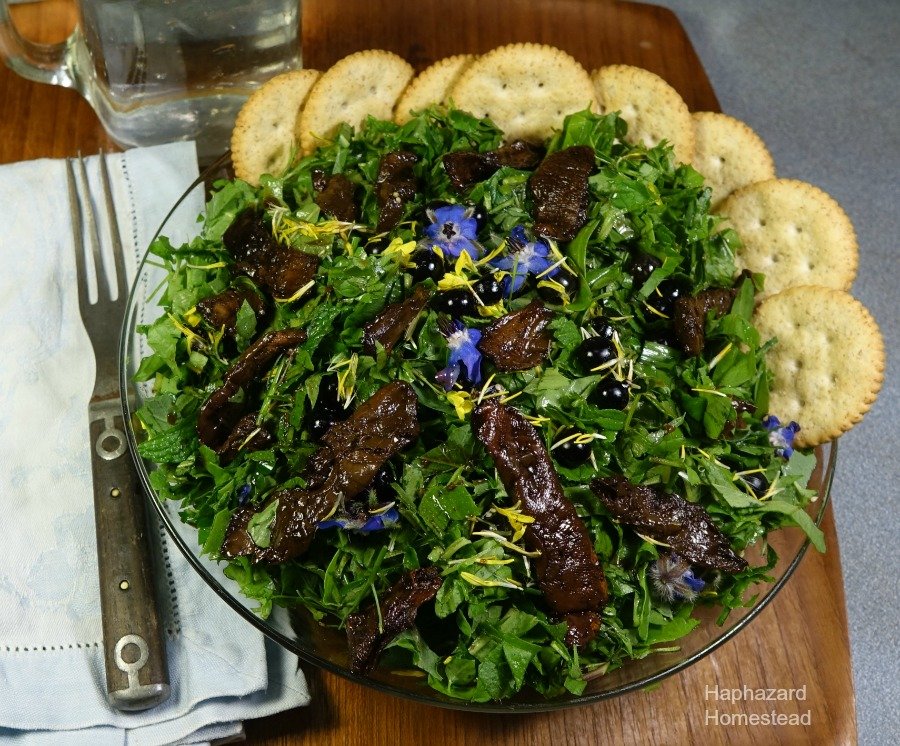
Being able to eat wild plants, especially weeds, is the epitome of sustainability. The plants in this salad took absolutely zero effort from anyone, except for the picking and cooking. They take care of themselves. Many of them are invasive weeds, so we can pick all that we want. That's incredible and sustainable. I truly hope that every one of you can find wild plants around you, especially weeds, that are good to eat. This is real food for regular people. It's incredibly good food.
Step 1. Find a tasty wild mushroom
On Thursday, I noticed a great-tasting mushroom had popped up around a pile of sticks. It's one of the "Shaggy Parasols", a group of edible mushrooms found on four different continents. In this case, it's Chlorophyllum brunneum. I did due diligence on my identification - especially making sure that the spores for this specific mushroom were white instead of green.
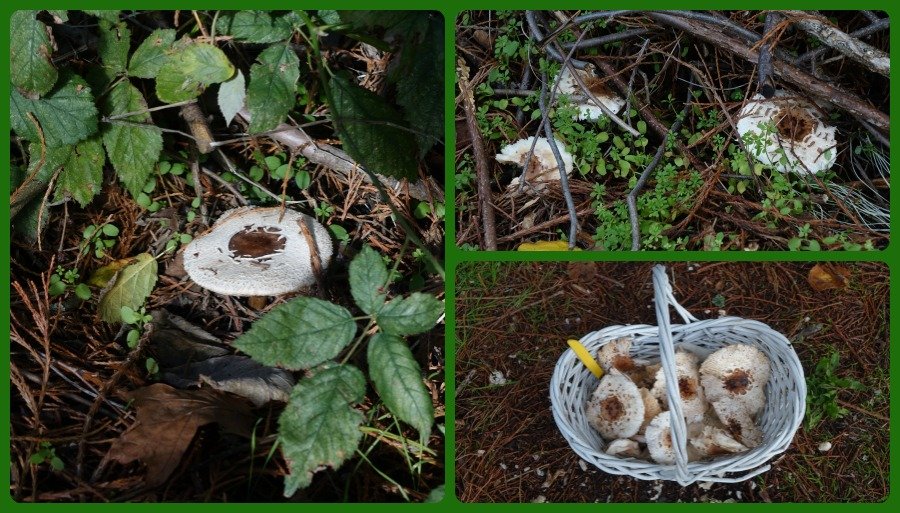
On Friday, I processed and marinated my mushrooms. I used three of the really nice mushrooms for my salad. The gills on the largest mushroom had a few bugs, so I scraped the gills off that one. The others were just fine. I sliced each of the mushroom caps, about 1/2-inch wide for each slice. Then I covered them in a marinade. Here's what I put in my marinade: 1/4 c. soy sauce, 3 T. Worcestershire sauce, 3 T. balsamic vinegar, 1 T. liquid smoke, and 3 T. olive oil. I put all that in the refrigerator overnight.
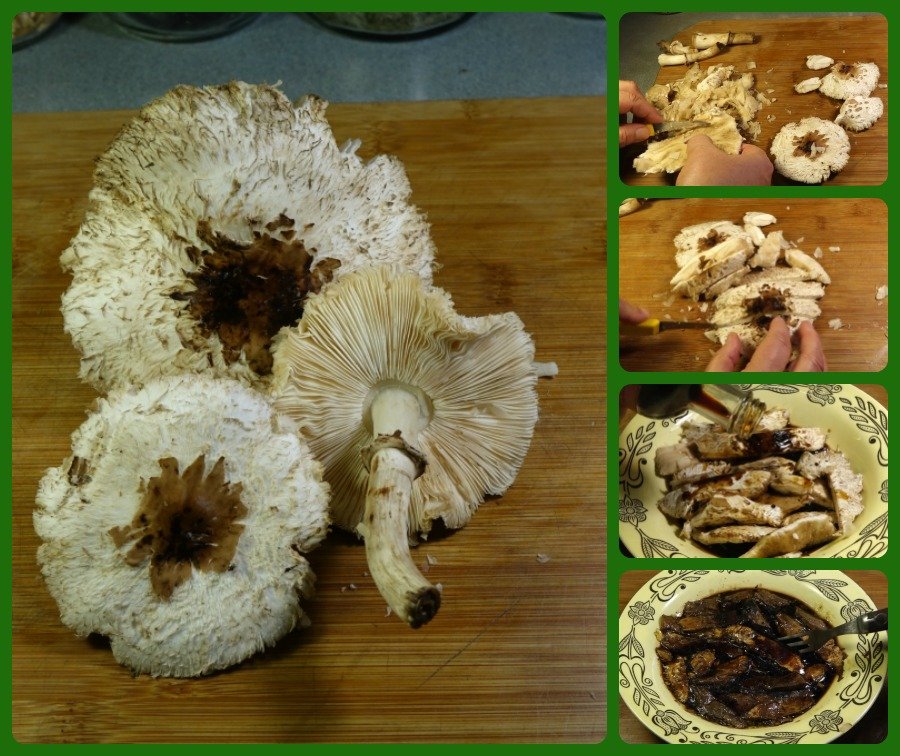
On Saturday, I cooked my mushrooms. It is really important to cook any of the Shaggy Parasols really well. Not just a little bit, but all the way through. I laid my marinated mushroom strips on a cast iron skillet on medium heat. I let them slowly cook in their own juices. But sometimes I basted them with the marinade.
Shaggy Parasols turn a rich, deep brown when they cook. They are like little strips of beef - nice and hearty. I cooked them about 10 minutes. I removed them from the skillet to cool. I boiled the rest of the marinade to use as the salad dressing -and set it aside to cool, too.

Step 2. Get the greens
My salad greens all came from my yard. I just took a walk. I took all the photos first, because that takes a lot longer than actually picking everything. Here are three collages with the plants I picked. Many of these plants grow in many parts of the world as weeds or garden escape artists. I pick clean, so there aren't other weeds mixed in. And I keep my picking organized, so it's easier in the kitchen to double-check that I have only the plants I want.
The numbers in each collage correspond to the number in the plant identification list. Do you recognize any of them? Which ones do you have growing around you? Many of these plants are weeds and grow all over the world.
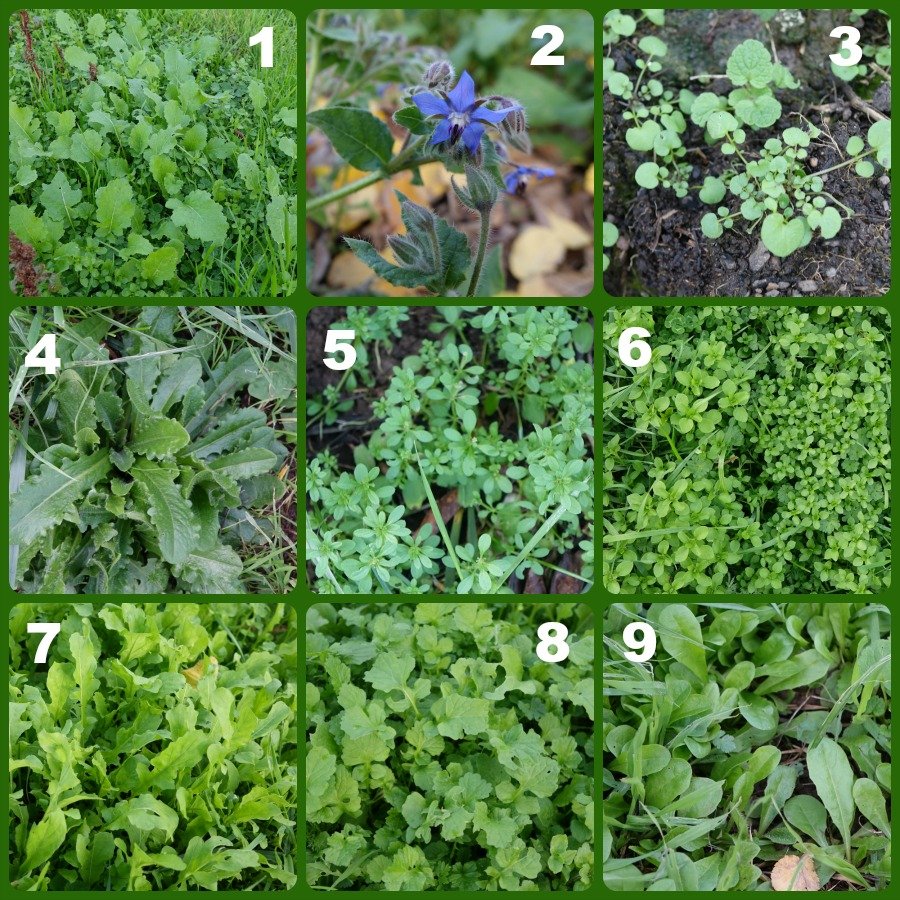
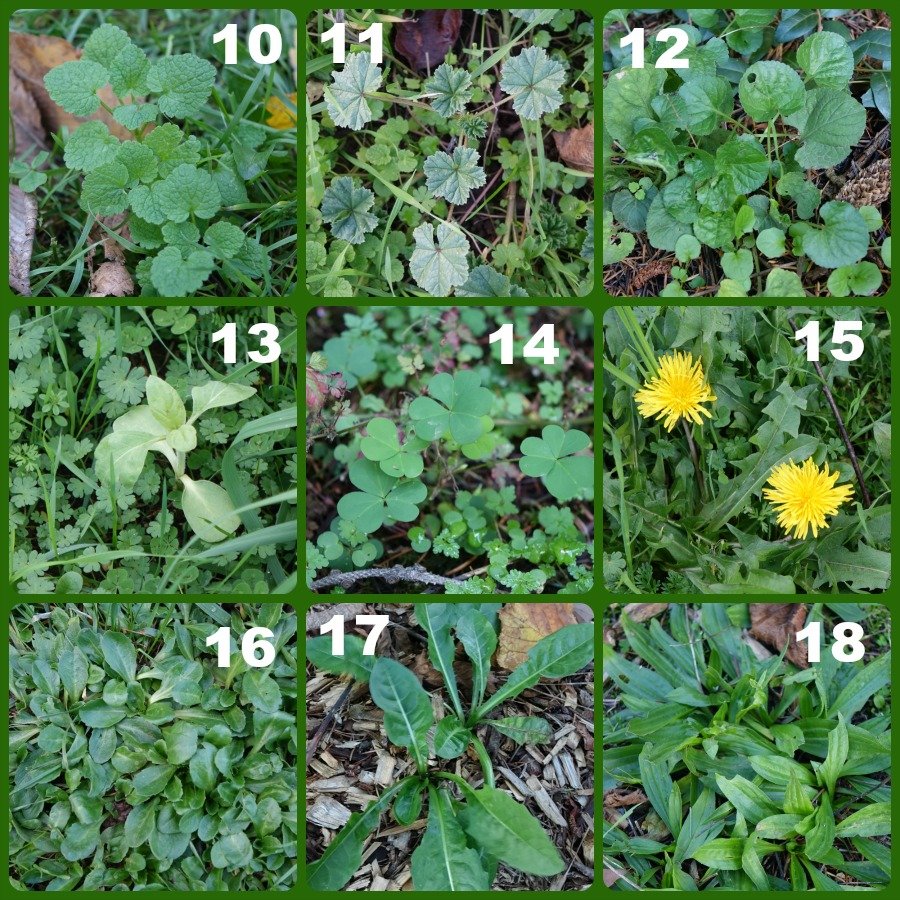
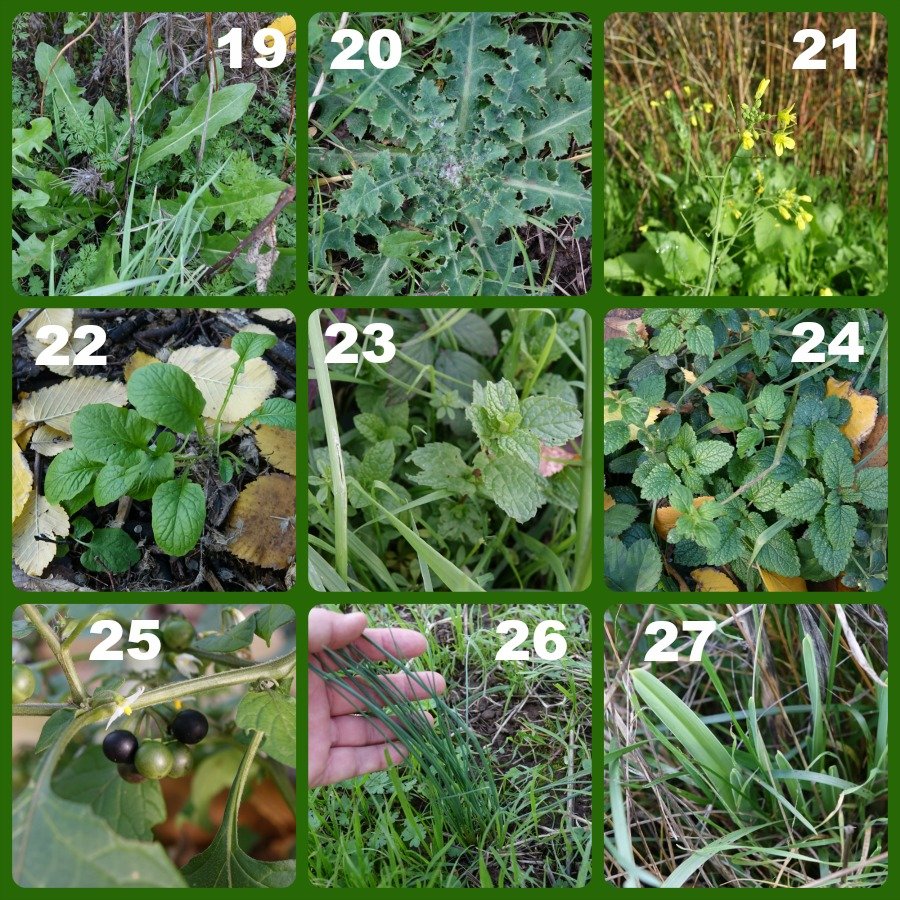
Step 3. Bring the harvest back to the kitchen
Back in the kitchen, I lay all my greens out to double-check that I don't have any non-edible plants. And I cull any poor quality plants. The numbers on each image correspond to the number in the plant identification list. Can you recognize any of them?
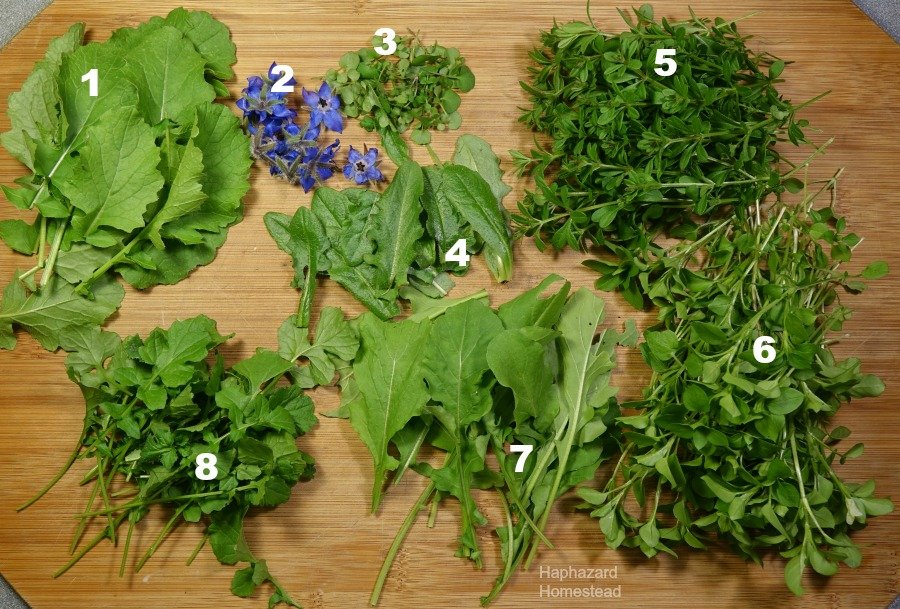
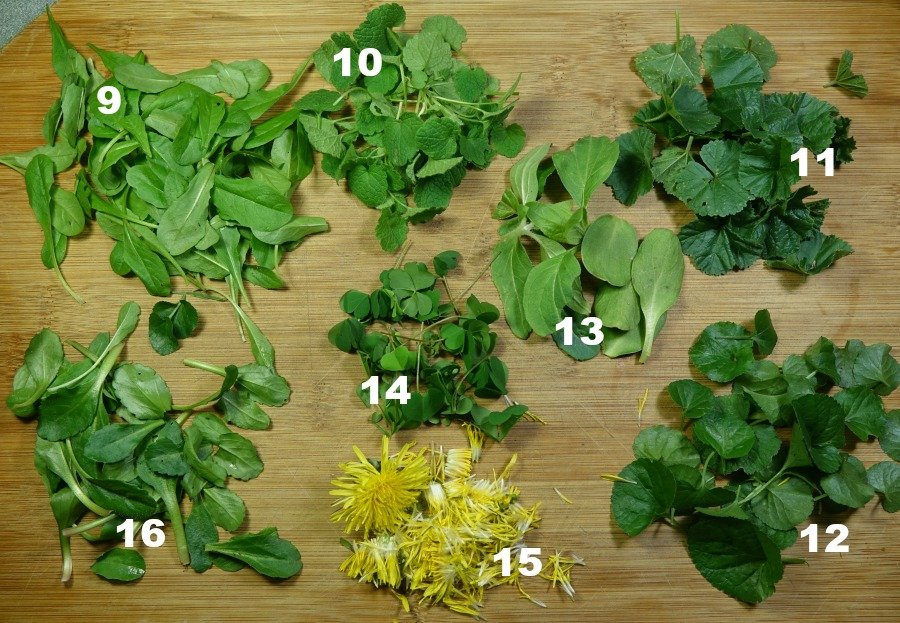
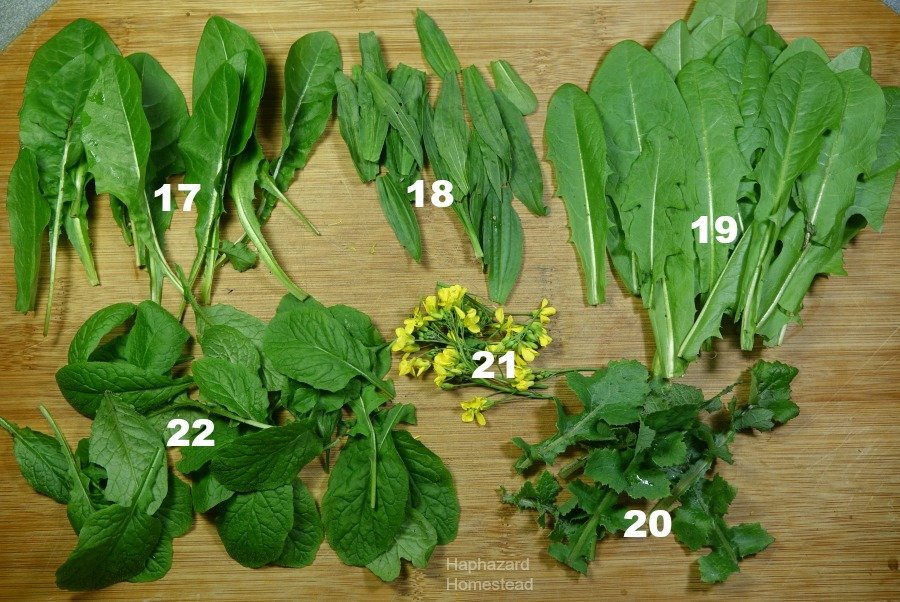
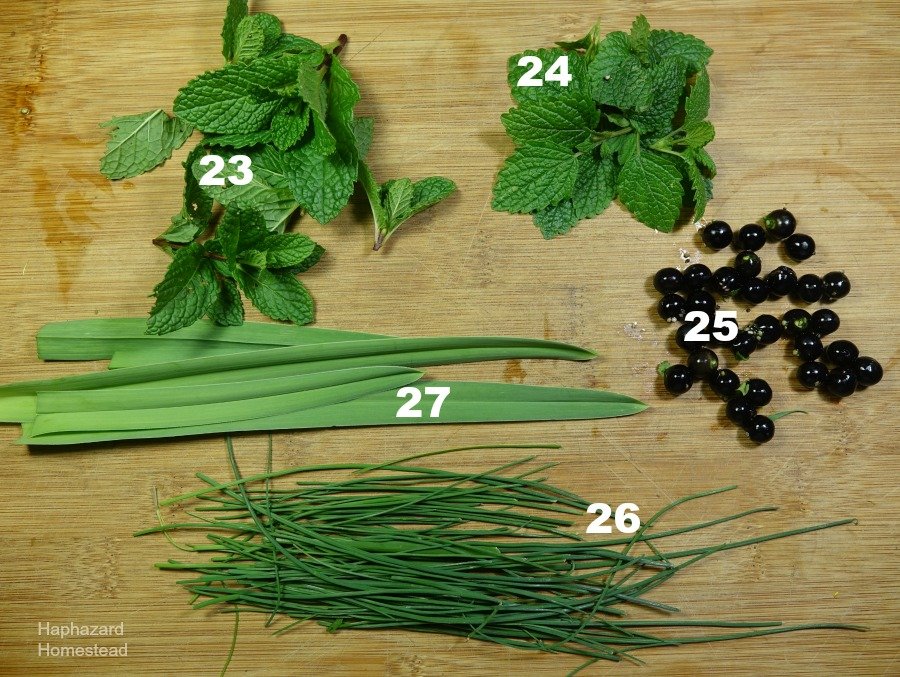
Step 4. Make the salad
Once I review all my plants, I put all the vegetation in a big pan to rinse them well. With all the fall rain, these plants can have mud and grit on them. So it's important to rinse them well. I keep the flowers and nightshade berries off to the side.
Then I drain the plants and chop them finely. I don't just chop them once, but a few times over. By chopping them so finely, all the flavors mix together. This is what makes a weed salad so tasty. You can see that my big pile of greens ends up a lot smaller in the final pile.
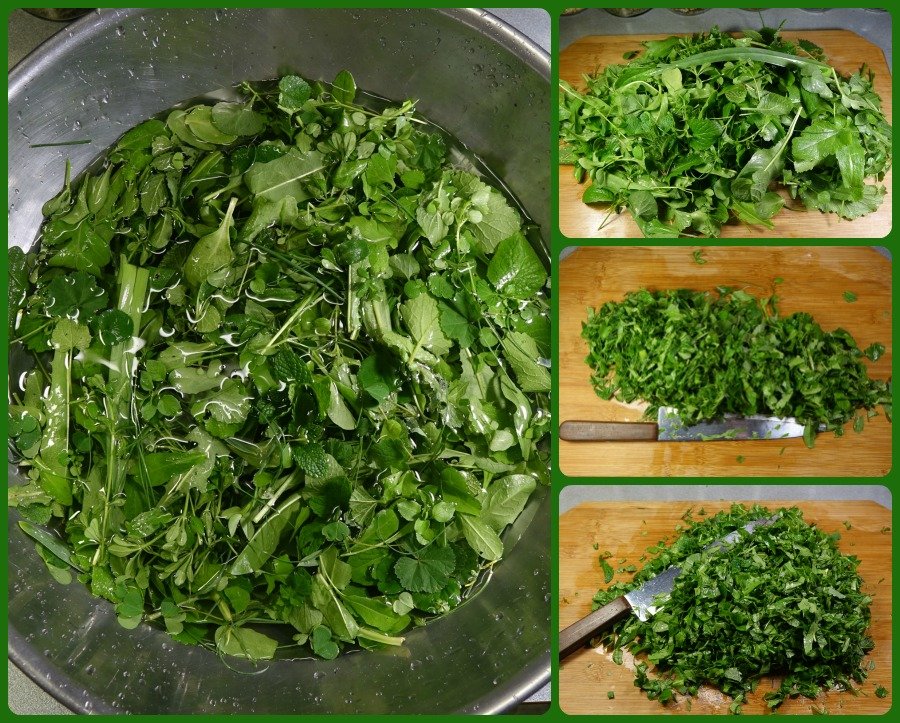
I put my chopped greens in a big salad bowl. I drizzle on the cooled marinade. Add the flower and nightshade berries on top. Lay the Shaggy Parasol strips on top. There's a good salad.
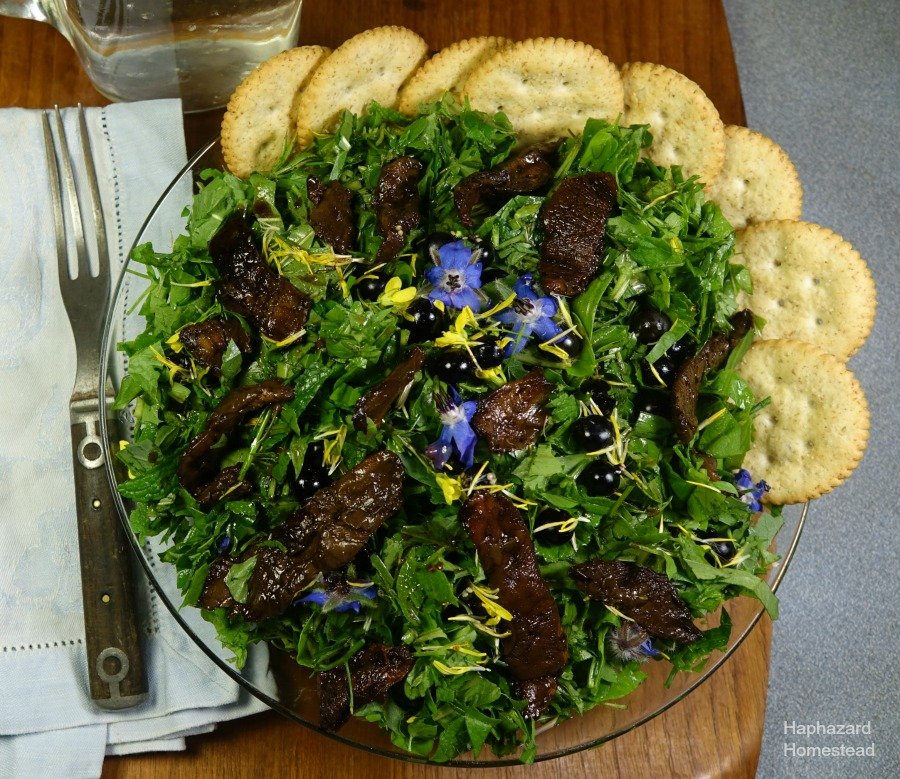
I got so involved in my salad, I forgot to put my Steemit note beside it. But at least I remembered when I was done. Yep, I ate the entire salad. It was that good. I hope someday each of you get to eat a wild salad. They are so good.
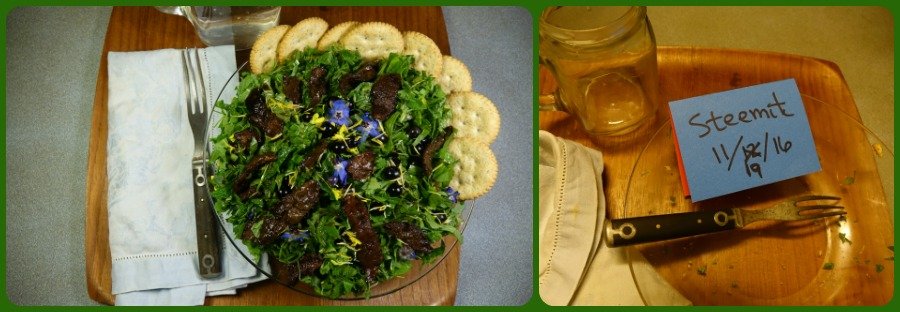
Plant List
- Field mustard greens – Brassica rapa – leaves from fall through early summer
- Borage flowers - Borago officinalis - flowering until frost, as usual
- Bittercress - Cardamine hirsuta - leaves fall to early summer
- Cats-ear - Hypochaeris radicata - the new fall leaves are tender and mild
- Cleavers - Galium aparine - leaves fall through spring
- Chickweed - Stellaria media - from fall through spring
- Wild arugula - Diplotaxis tenuifolia - leaves all year
- Hedge mustard – Sisymbrium officinale - leaves from fall through early summer
- Prickly lettuce - Lactuca serriola - tender young leaves fall through early spring
- Purple deadnettle - Lamium purpureum - leaves fall through early spring
- Common mallow - Malva neglecta - leaves - a summer holdover, but reinvigorated by autumn
- Common sweet violet - Viola odorata - leaves fall through spring
- Sunflower - Helianthus annuus - sprouts from birds and squirrels hiding them throughout my yard
- Woodsorrel - Oxalis spp. - leaves fall through spring
- Dandelion flowers – Taraxacum officinale – flowers that are around spring through fall
- English daisy – Bellis perennis – leaves from fall through early summer
- Bristly Hawksbeard - Crepis setosa - a summer holdover, but reinvigorated by autumn
- Narrowleaf plantain - Plantago lanceolata - leaves fall through early spring
- Dandelion greens – Taraxacum officinale – the new fall leaves are tender and mild
- Common Sowthistle - Sonchus oleraceus - leaves fall through early spring
- Field mustard flowers – Brassica rapa – flowers from fall through early summer
- Nipplewort - Lapsana communis - leaves fall through spring
- Spearmint - Mentha spicata - it lasts from spring through fall
- Lemon balm – Melissa officinalis - it lasts from spring through fall
- Black nightshade - Solanum nigrum - fruits from late summer until frost
- Wild chives - Allium schoeneprasum - leaves from fall through spring
- Elephant garlic - Allium ampeloprasum - leaves from fall through spring
What Do You Think?
What weeds are you eating in your salads this fall? What weeds do you look forward to seeing again in the fall? Do you eat any wild mushrooms? If there are any specific plants from this salad, or others that I've posted about, that you want to know more about, let me know. I'll put together a post about it.
I write about foraging because I believe that we can all have lives that are richer, more secure, more grounded, and more interesting by getting to know the plants and the land around us – in our yards, our parks, and our wilderness.
I would like Steemit to be the premier site for Foraging on the Internet! If you have any thoughts about foraging, or experiences to share, write a post and be sure to use the Foraging tag. And check out the @foraging-trail to see curated quality posts about foraging. Happy Foraging!
Note: This post was an entry into Steemit Culinary Challenge #4 - Salads.
** Haphazard Homestead **
*** foraging, gardening, nature, simple living close to the land ***
All content is 100% Haphazard Homestead - photos and all!
I participate in Operation Translation. All my posts are available for translation under the rules listed on the linked post from @papa-pepper. Logo provided by @oepc85. Post goes 100% to Steem Power! Logo provided by @merej99

*** foraging, gardening, nature, simple living close to the land ***

